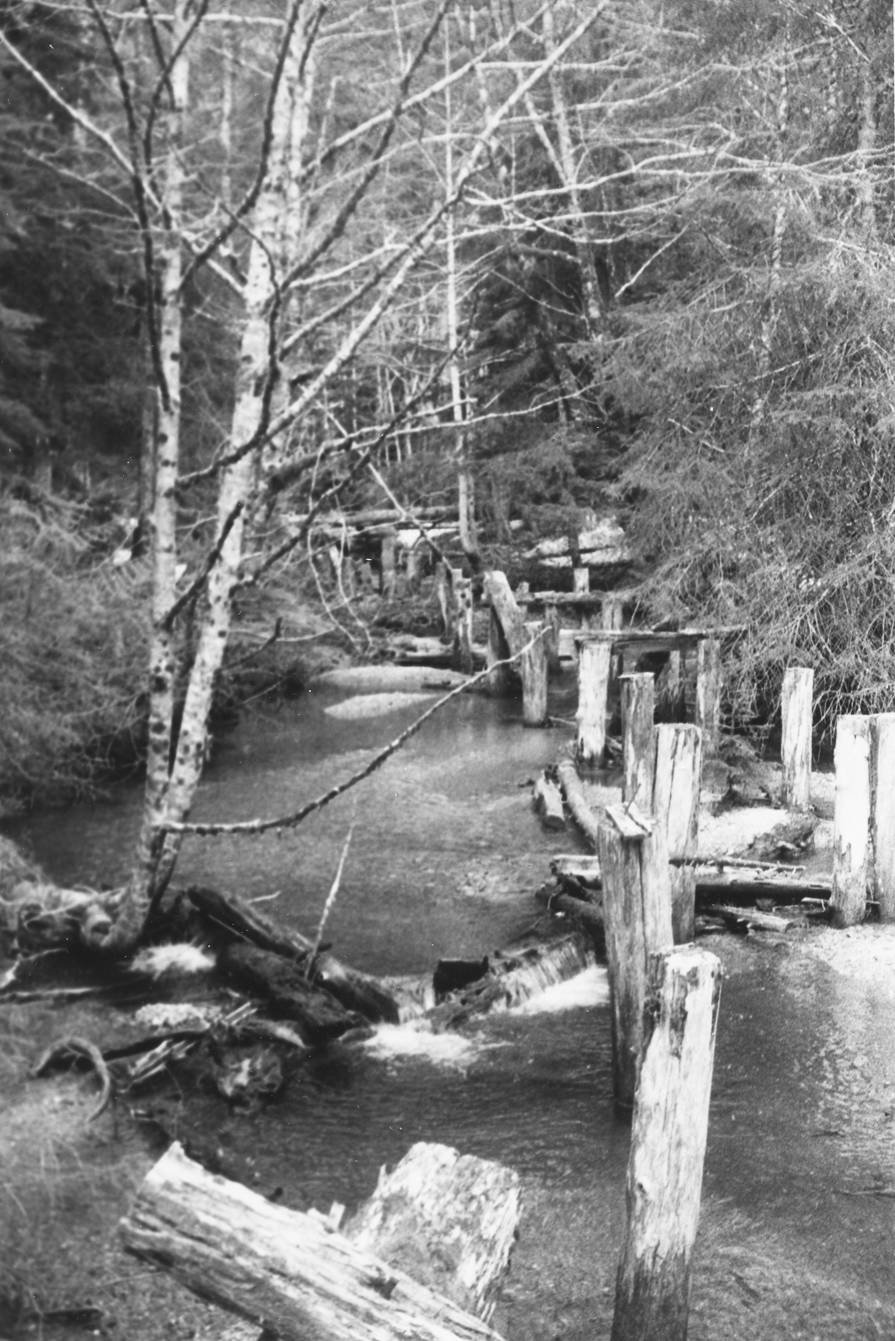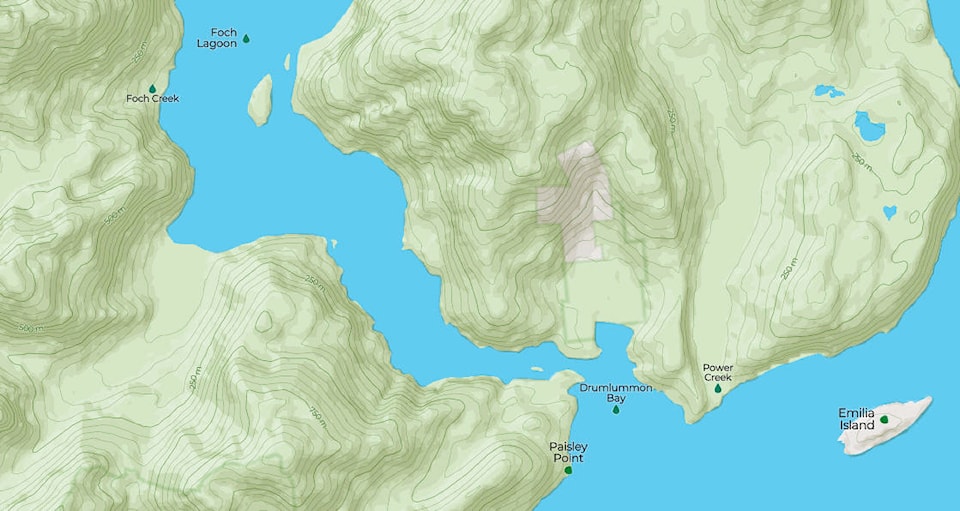Kitimat’s pioneer history included a few frenzied decades prior to 1920 when prospectors and miners were aplenty - probably as a result of Dominion government grants and incentives to entice mining development.
While the world was addicted to the alluring lustre of gold and silver, copper was becoming the wonder metal, a kind of new gold with its versatility and use – as a result it became a valued and sought after commodity.
Kitimat’s best-known mine was the Golden Crown, operated and developed east of Minette Bay by Mr. James Steele and Mr. John Dunn in 1898. There were also the smaller Copper Queen, Mighty Dollar and Kitamaat Gem mines. Near the Wedeene River the Lindeborg brothers operated on the Iron Mountain claim.
However, the largest and most expensive conventional shaft mining operations in our Kitimat area were by far the Drumlummon, and Paisley Point, gold, silver and copper claims just north of the entrance to Foch Lagoon (Drumlummon might well have been the areas’ first industrial scheme of size).
The project included the construction of a dock at the creek mouth in the little bay to the north of the entrance to Foch Narrows, some 34 kilometres south of Kitamaat and just to the south of Jesse Lake and Guillotoyees inlet on the western shore of Douglas Channel.
Apart from the dock, the project also included the construction of a port-side mill for refining the ore and an extensive railway tram line which would transport the ore concentrate in metal tram cars right down to the oceanside mill and dock. An upper slope zipline with an ore bucket was used to transport ore to the lower ore corridor.
Visited and photographed by Alexander Hruby in 2005, the upslope mine site had extensive tunneling and contained a substantial amount of mining equipment. There are thousands of feet of tunnels that are still accessible and much of the equipment stands as it was left the day the owners announced bankruptcy in 1923.
In terms of infrastructure invested, Drumlummon was substantial – the last mining report about this property, which delivered up primarily bornite, chalcocite and a minor contribution of gold and silver, was filed in 1930. Apparently, the sought after copper ore was elusively absent.
It should be emphasized that this site is very dangerous and is very difficult to access, requiring a 30-kilometre boat ride and as much as a two-hour uphill bushwhacking march to reach the site. The torturous trek to the site is usually only attempted by fit and seasoned geologists.
The tunnel entrance is under a waterfall in the main creek about halfway up the slope to the alpine. In total, the old ore railway tramline from the ocean dock to where it met the zip line was about a kilometre. The mineral claim for the various properties was active well into the 1980s.
Drumlummon claim was briefly reorganized in 1926 as Paisley Point (other names apparently used for the claim were Caledonia and Los Angeles Vancouver). The remote site had its challenges – it was located adjacent to one of Canada’s most powerful tidal lagoons, featuring treacherous, high-speed currents and whirlpools.
In April of 1917 on approach to Drumlummon Bay the Union Steamship vessel S.S. Coquitlam – attempting to deliver mining equipment – was caught in the powerful outflow from Foch Lagoon’s tidal race and smashed into a rock face, popping rivets in the hull and letting five feet of seawater into the hull.
Fortunately, emergency repairs and the ship’s pumps enabled the ship to limp south to a drydock in Victoria – we’re not sure if Drumlummon Mine ever received those intended supplies and machinery.
The Drumlummon site would have been subject to challenging weather. The mine itself was a considerable distance up the hill from the oceanside dock. Conditions there would have been cooler and no doubt the snowfalls would have been prodigious.
When Drumlummon did eventually start operating, its days were numbered - in fact it was doomed from the start. The mine was one of the many victims of the stock market fluctuations in the 20s and we doubt the mine ever operated beyond a couple of seasons.
Today this mine site sits adjacent to the new Foch Guiltoyees Provincial Park established in 2004. Boaters and history buffs have been scouring the site for the past nine decades, sometimes helping themselves to historical souvenirs.
Fortunately, some of these mining artifacts have been donated to museums (including ours at the Kitimat Museum and Archives). Thanks to efforts by folks like Alexander Hruby and Dirk Mendel we get glimpses of what life used to be like at the mines.
The remnants of the pile-driven posts that elevated tram line are still evident in the creek bed near where the old dock and mill must have been situated.
Now, nearly a century later many questions remain. Did the Drumlummon and Paisley Point mines actually ship mine concentrate from their site at Foch? How large was the work crew that established the mining operation including the dock, mill, the long tramline and the tunnel shafts? How many miners did it take to run the mine?
And was there ever an attempt to rescue any of the mining equipment after the mine went bankrupt? Further investigation over the coming years may provide answers.
Perhaps the mining claim, which still exists, will prompt some investor to dig a little deeper. The future has many possibilities.

